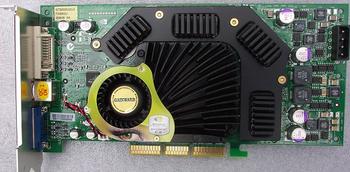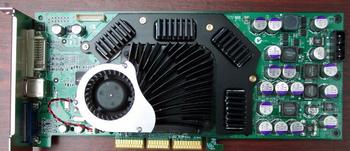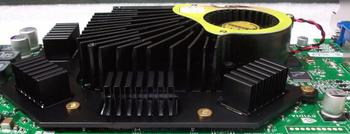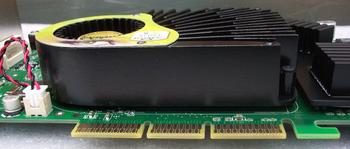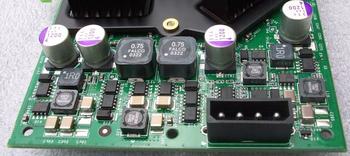Card I
Gainward have a deserved reputation for producing some of the best-looking cards on the market. A trademark red PCB, custom RAMsinks and non-standard coolers have been some of their hallmarks in recent times.
The picture that you see above is not a mistake. It looks far too generic to be a Gainward card. The Gainward GPU fan sticker and small Golden Sample label on the top-left are the obvious giveaways. Some readers may think that this is just a complete reference design with no alternations. That, though, isn't strictly the case. The initial reference model is shown below.
Notice how the Gainward card, undoubtedly manufactured by NVIDIA's long-term partner Flextronics, is a little shorter than the reference model. The fan and cooling assembly are the same, granted, but a reasonable amount of PCB redesign has taken place in the two or so months since we reviewed the reference card. That doesn't mean the Gainward card is small, because it's still far larger than its arch-rival, the ATi Radeon 9800 Pro. The weighty feel of the Gainward XP1600 is kind of reassuring.
The dual-sided heatsink assembly literally screws into the card from the rear. The reference nature dictates that no active cooling is employed on this side.
NVIDIA have managed to shake off the huge, huge cooling that was strapped on to the luckless GeForce FX 5800 Ultra. The cooling still requires the use of a second PCI slot, however, so that drawback still remains intact. The sheer presence of it seems to infer that the Californian outfit may have had a little difficulty in reaching 450MHz core, as we've seen non-Ultra models use a less imposing heatsink arrangement. We've enquired through our various sources and gleaned that only big-name manufacturers are willing to stray off the reference cooling design for their Ultra models.
We've alluded to the fact that the card is smaller than the reference model, yet NVIDIA continue to use an upturned MOLEX connection. In our test PC case, a reasonably roomy Lian-Li PC60, the card, once mounted, came quite close to the pre-installed hard drive. We must note that no components appeared to be fouled on the test EPoX 4PDA2+ Springdale motherboard.



